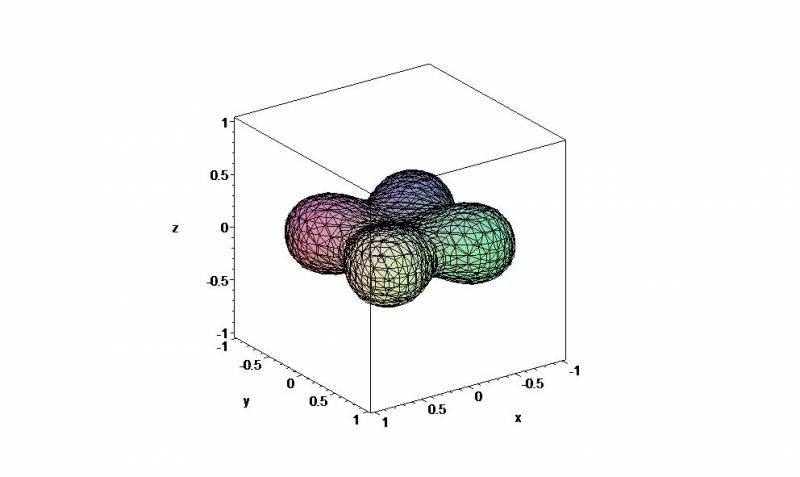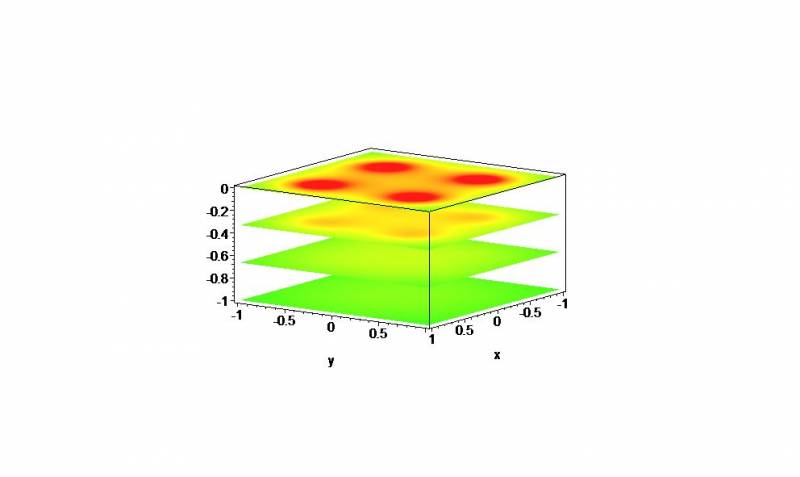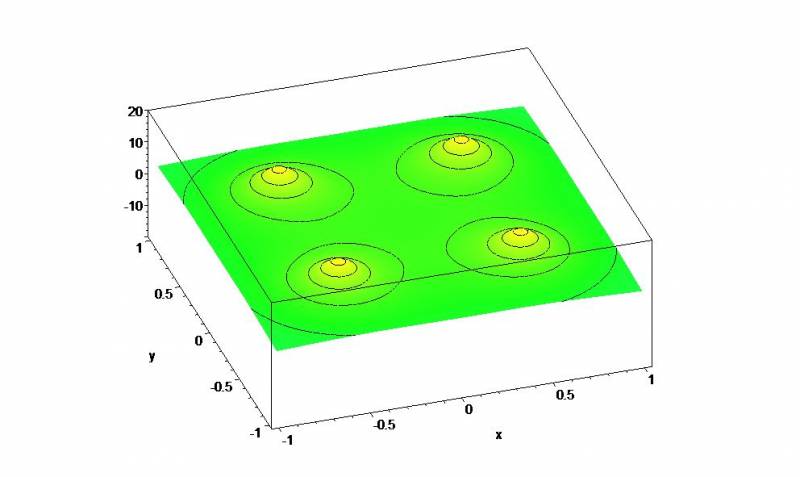Wrap-Up: Using Technology to Visualize Potentials
In § {Activity: Using Technology to Visualize Potentials}, you were asked to explore different ways of graphically representing a scalar field such as the electrostatic potential in three dimensions. Several standard representations that are used by scientists are show below.
One possibility to to plot an equipotential surface, i.e. the set of points in space for which the value of the electrostatic potential is some specific fixed number. In this case, you would need to make a different plot for each possible value of the electrostatic potential. Typically, a few different values are sufficient to convey the salient features. See Figure 1, for an example of the electrostatic potential due to four point charges.  Figure 1: An equipotential surface due to four positive point charges.
Figure 1: An equipotential surface due to four positive point charges.
Another possibility is to use color to represent the value of the electrostatic potential. Then the scalar field is represented by a color at each point in space. If we had a great virtual reality program, we could imagine moving through space, examining the colors as we moved around. While we are waiting for that technology to arrive in our classroom, we'll show a picture of some cross sections through space with colors on them. See Figure 2, for the same example of the electrostatic potential due to four point charges in this new graphical representation.  Figure 2: Several cross sections of the electrostatic potential due to four
positive point charges.
Figure 2: Several cross sections of the electrostatic potential due to four
positive point charges.
Because our perception of color is not very fine grained, it is difficult to read an accurate numerical value for the electrostatic potential from a colored graph. We would really like to use the vertical direction on the graph to represent the value of the scalar field, just as we would for functions of one or two variables. But then we cannot show all three spatial directions of the scalar field at once. Figure 3 shows yet another representation of the electrostatic potential due to four point charges.  Figure 3: A single cross section of the electrostatic potential due to four
positive point charges.
Figure 3: A single cross section of the electrostatic potential due to four
positive point charges.